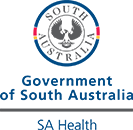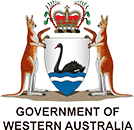PET scan
Key facts
- A positron emission tomography (PET) scan is an imaging test that uses radioactive material to diagnose a variety of diseases such as tumours, heart disease, brain disorders.
- A PET scan shows how the body is working, unlike other scans, which only show its structure.
- The scan usually takes about 15 to 20 minutes, but you can expect to be in the PET imaging department for about 2 to 3 hours.
- PET scans are very safe and there are no side effects associated with the radioactive tracers, which remain in your body for a only short time.
What is a PET scan?
A positron emission tomography (PET) scan is an imaging test that uses radioactive material to diagnose, monitor and treat a variety of conditions and diseases. Doctors use it to find tumours, diagnose heart disease and brain disorders and other conditions. A PET scan shows how the body is working, unlike other scans, which only show its structure.
How do PET scans work?
During a PET scan, you are injected with a small amount of short-acting radioactive liquid, known as a tracer. The one most used is fluorodeoxyglucose (FDG). FDG is a simple sugar (glucose) that has been radiolabelled. This means that it gives off energy in the body which can be seen by the scanner.
The rate at which sugar is taken up by the body’s tissues gives an indication of how active the tissue is. For example, cancer cells grow quickly, so they need a lot of energy, and therefore a lot of sugar. This increased uptake of sugar makes them show up as bright ‘hot spots’ on the scan.
Healthy tissue also uses more sugar than unhealthy tissue. A scan that shows less tracer than expected may indicate unhealthy tissue or reduced blood flow to the area.
When might I have a PET scan?
PET scans are performed for many reasons, including:
- finding tumours
- monitoring the spread or recurrence of cancer
- monitoring a tumour’s response to treatment
- diagnosing and evaluating heart disease
- assessing whether someone with refractory epilepsy may benefit from surgery
ASK YOUR DOCTOR — Preparing for an appointment? Use the Question Builder for general tips on what to ask your GP or specialist.
FIND A HEALTH SERVICE — The Service Finder can help you find doctors, pharmacies, hospitals and other health services.
How do I prepare for a PET scan?
The scan usually takes about 15 to 20 minutes, but you can expect to be in the PET imaging department for about 2 to 3 hours.
Before the scan, you should:
- ask about any food and drink restrictions before your scan
- bring any previous x-ray or radiology images you have
- let staff know if you’re breastfeeding or might be pregnant
- tell the staff if you have diabetes
- tell the staff if you are likely to feel anxious about being in a closed space (claustrophobia)
What happens during a PET scan?
After arriving at the hospital or radiology centre, you will change into a gown and remove all metal and jewellery items. Staff will insert an intravenous line (IV drip) into a vein on the back of your hand or arm. Your blood sugar levels will be checked and then the radioactive tracer will be injected into your vein through the intravenous line.
You will then rest quietly in a bed or chair for 90 minutes. For some scans, you may be given some contrast material to drink. You will be able to empty your bladder before the scan starts.
The PET scanner has a flat bed which slides into a round opening. Once in the PET scanner, you will be asked to remain as still as possible while the scans are being done. You can tell the staff if you get stiff, uncomfortable or are feeling claustrophobic.
The scan usually does not take more than 20 minutes.
After the scanning, staff will check the images. They will remove your intravenous line. After the test, you should drink plenty of water to flush out the radioactive tracer. If you are breastfeeding, you will be given specific instructions about when to resume breastfeeding.
A specialist will examine the scans and write a report for your doctor, who will explain the results to you.
Are there any risks of having a PET scan?
PET scans are very safe. There are no side effects associated with the radioactive tracers, which only remain in your body for a short time. In addition, the dose of radiation is very small — similar to several years’ worth of natural radiation from the environment. Allergic reactions are very rare and usually minor.
Resources and support
For more information about PET scans, when they are used and how they are done, see the Cancer Council website.
Call healthdirect on 1800 022 222 at any time to speak to a registered nurse (known as NURSE-ON-CALL in Victoria) for more information and advice.
Learn more here about the development and quality assurance of healthdirect content.
Last reviewed: March 2024











